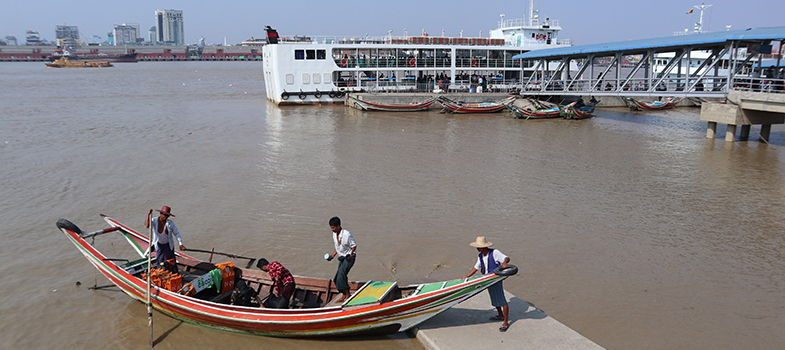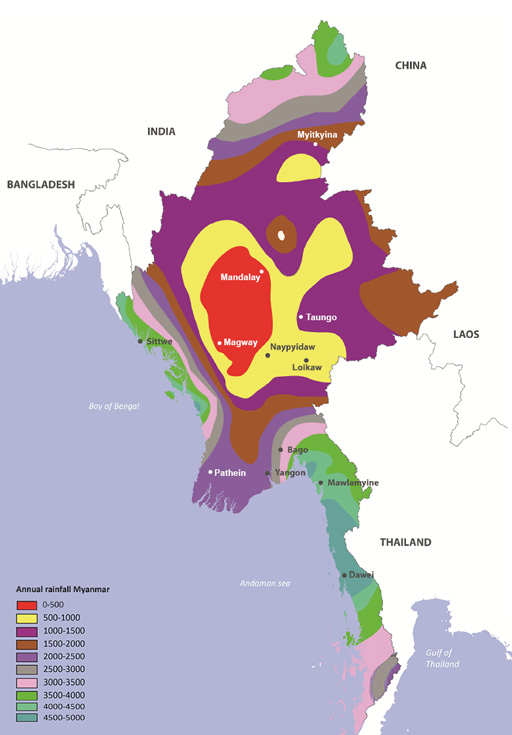1.4 Water Resources in Myanmar
Myanmar is a country in a favourable situation with respect to water resources. There are only a few trans-boundary rivers, which means that virtually all water resources are within the national borders. Abundant water resources mean there is substantial scope for their development. The major river basins cover large areas of Myanmar and provide natural resources for many livelihood sectors. Myanmar is identified as a country with abundant water resources, but with marked seasonal and regional variability.
The mean annual rainfall, which is how water resources are renewed, is around 2,100 millimeters, but this varies from as high as 5,000 millimeters along the coastal areas of Rakhine and Tanintharyi states to less than 1,000 millimeters in the Central Dry Zone (ADB, 2017). Total renewable annual water resources are estimated at 1,100 cubic kilometers. The renewable water resources per capita (the total sustainable water available per inhabitant) is about 19,000 cubic meters per year (Kingdom of the Netherlands, 2016). This is Myanmar’s water endowment.
A country with an annual per capita water endowment of less than 1,700 cubic meters is considered to be under water stress. Myanmar’s water endowment is about 9 times the available levels in China, 16 times India, 5 times Vietnam and 16 times Bangladesh (Kingdom of the Netherlands, 2016). However, despite Myanmar’s generous water endowment, only 5% is currently used.
Question 8
Use the image in Figure 4 to answer these questions
Using the following two lists, match each numbered item with the correct letter.
Magway
Dawei
2000-2500 millimeters
0-500 millimeters
500-1000 millimeters
a.What is the annual rainfall for Mandalay?
b.What city is in the driest part of Myanmar?
c.What is the annual rainfall for Yangon?
d.What city is in the wettest part of Myanmar?
e.What is the annual rainfall for Nayphidaw?
- 1 = b
- 2 = d
- 3 = c
- 4 = a
- 5 = e
1.3 The hydrological cycle or water cycle

